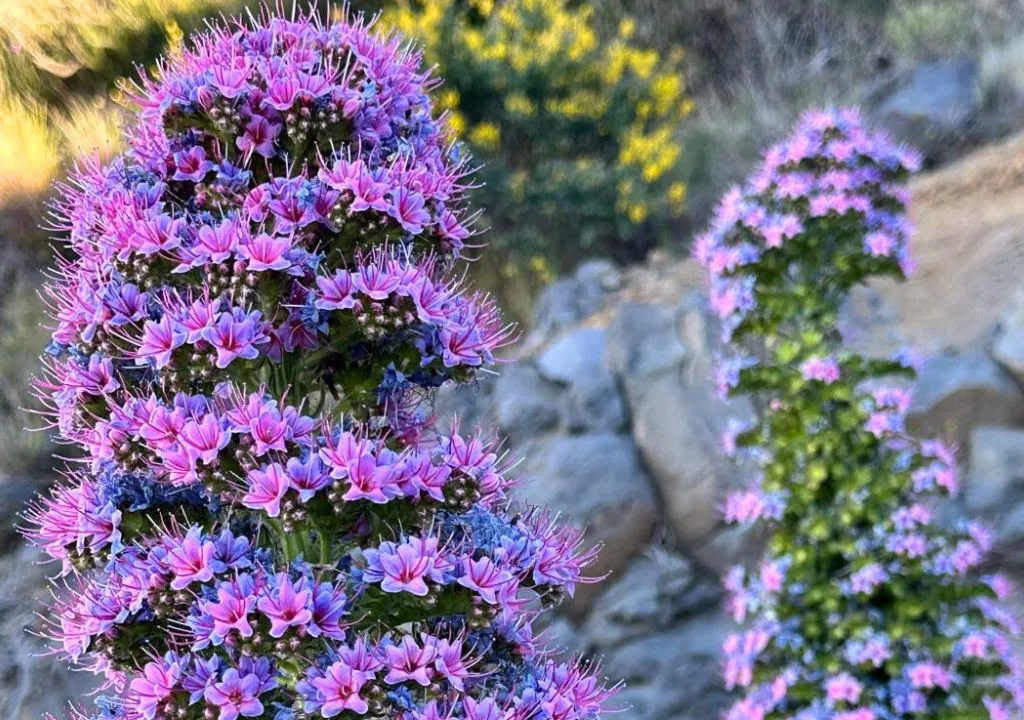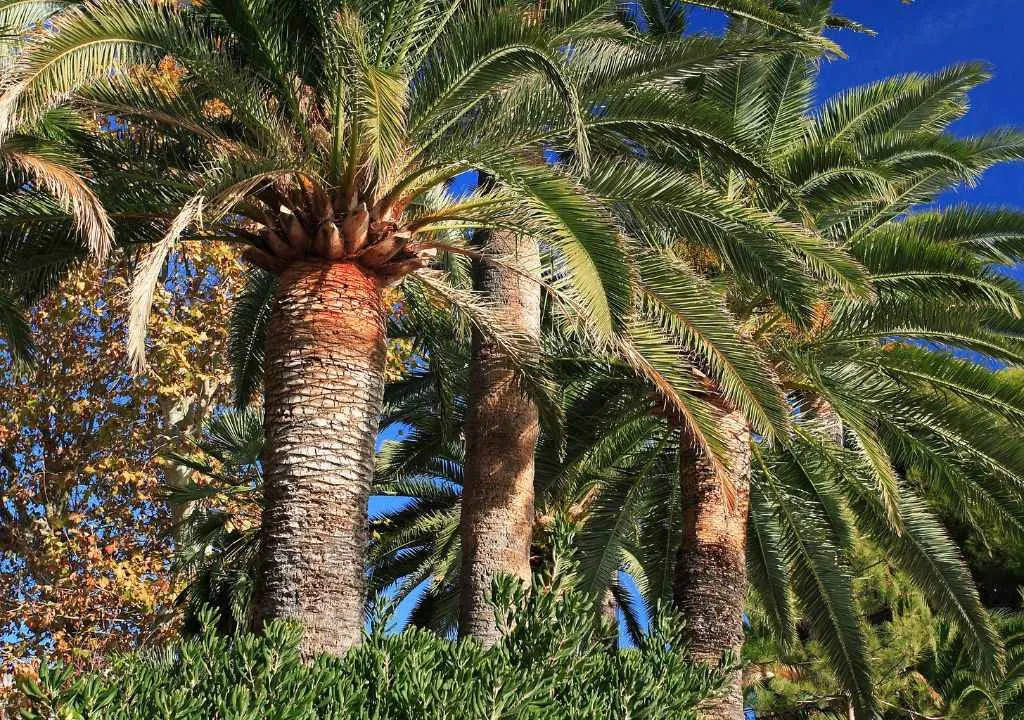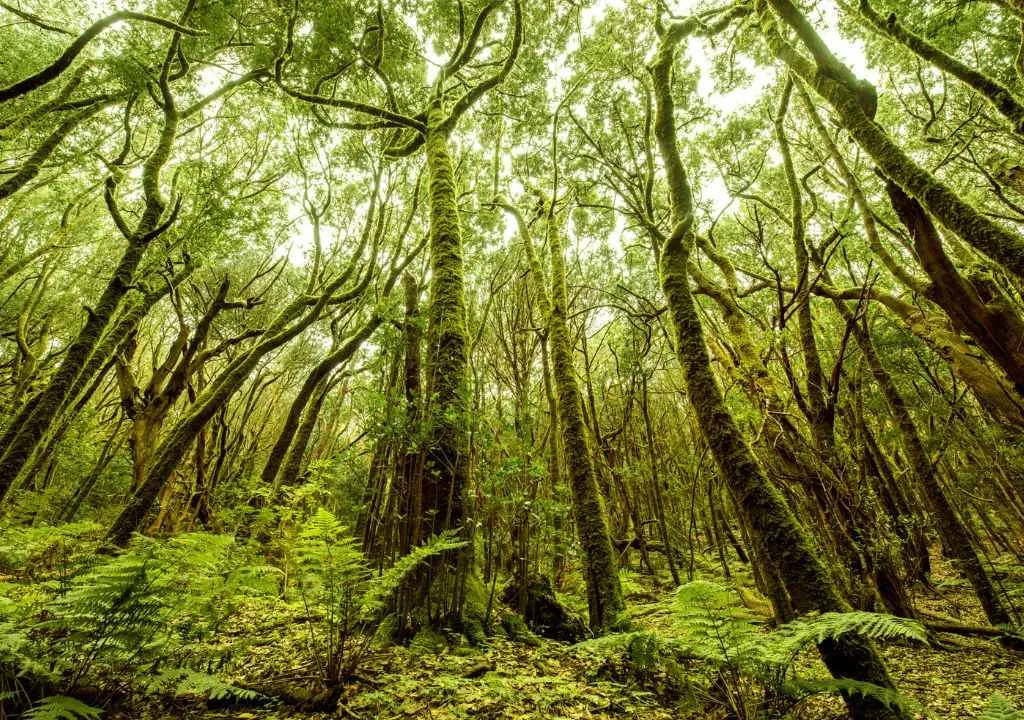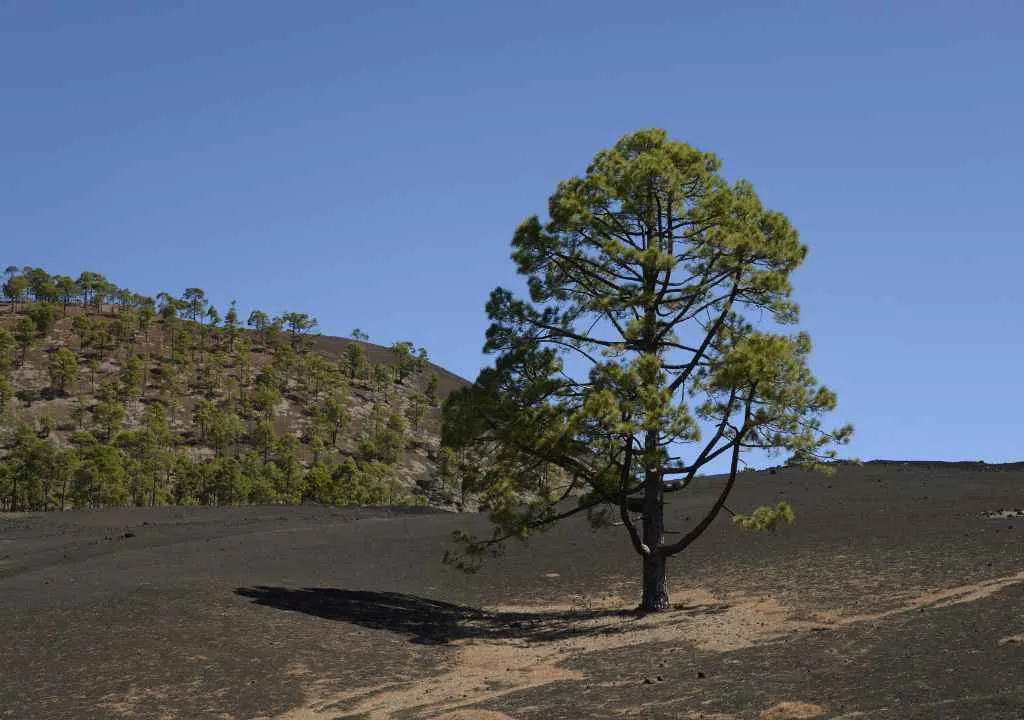The Dragon tree, also known as the Canary Islands dragon tree (Dracaena draco), is one of the most emblematic species of the Canary Islands, a plant surrounded by myths, history, and astonishing characteristics.
It’s a tree that inspires respect, both for its majestic presence and for its extraordinary longevity.
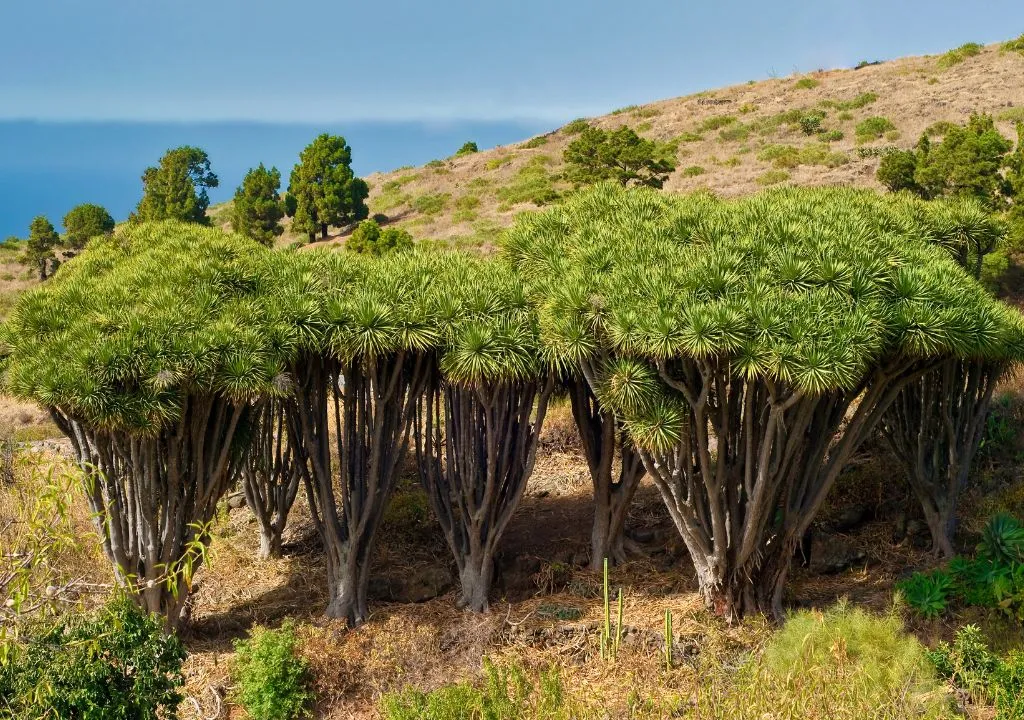
Technical Information and Description
| Common Name | Dragon tree, Canary Islands dragon tree |
|---|---|
| Scientific Name | Dracaena draco |
| Family | Asparagaceae |
| Type | Evergreen tree, very slow-growing |
| Height | 5–10 m (some specimens exceed 15 m) |
| Leaves | Long, rigid, grouped in rosettes at the end of the branches |
| Flowers | Greenish-white or creamy, arranged in terminal clusters |
| Fruit | Rounded orange or reddish berry |
| Flowering Period | Between spring and summer, depending on altitude |
| Distribution | Canary Islands, Madeira, Cape Verde, and parts of northwest Africa |
| Habitat | Dry, sunny areas with well-drained volcanic soils |
| Curiosity | Its reddish sap, called dragon’s blood, was used by the ancient islanders for medicinal and ritual purposes. |
The Dragon Tree in La Palma, Where to See It
In the municipality of Garafía, the dragon tree is a natural symbol of the landscape.
In areas like Buracas and Las Tricias, trails wind among ancient trees that grow on slopes and ravines open to the sea.
These giants, some several centuries old, create a unique atmosphere where nature, history, and spirituality blend in harmony.
Further north, in El Tablado, the dragon tree reappears as part of the island’s coastal scenery.
Its green silhouette stands out among terraced fields, traditional houses, and cliffs that descend toward the Atlantic.
In this region, dragon trees bring a magical serenity, linking human life with the wild spirit of La Palma.
Together, the dragon trees of Garafía form one of the most iconic sets of native flora in the Canary Islands, true guardians of time that keep alive the island’s natural memory.
Longevity, Growth, and Branching
One of the most fascinating traits of the dragon tree is its slow growth.
In its early years, it has a single trunk with no branches, but after the first flowering, it begins to divide.
The first branching occurs around 10 to 15 years of age.
Each time it blooms and bears fruit, new forked branches appear, giving the tree its signature umbrella-shaped crown with multiple arms.
Among the most legendary specimens is the Millennial Dragon Tree of Icod de los Vinos (Tenerife), whose trunk circumference reaches nearly 20 meters, with hundreds of branches spreading wide and high.
Traditional Uses and Mythology
Its reddish resin, known as dragon’s blood, was highly valued by the island’s ancient inhabitants.
They used it for rituals, healing, and embalming, believing it held powerful protective and curative properties.
It was thought to relieve toothache, strengthen gums, and even act as a natural antibiotic.
Over the centuries, the dragon tree has come to symbolize resilience, longevity, and mystical power in Canarian culture.
During colonial times, its resin was even exported and traded for its supposed medicinal and magical value.
Medicinal Properties of the Dragon Tree
- Natural wound healer: Its sap was applied to cuts and wounds to stimulate skin regeneration.
- Anti-inflammatory and antibacterial: Used to soothe irritations, insect bites, and minor skin infections.
- Oral care: Traditionally applied to strengthen gums and relieve toothache.
- Digestive aid: In small diluted doses, it was used as a mild purgative to ease stomach discomfort.
- Spiritual protection: The resin was believed to ward off the evil eye and purify spaces.
Precautions:
Although these uses are part of traditional medicine, internal use is not recommended without medical supervision.
The resin contains active compounds that can be toxic in high doses.
Today, the dragon tree’s main value is symbolic, ornamental, and ecological, representing the connection between nature, time, and human life in the Canary Islands.
It stands as a living emblem of endurance and beauty, and a reminder of the deep link between the people of La Palma and their land.

